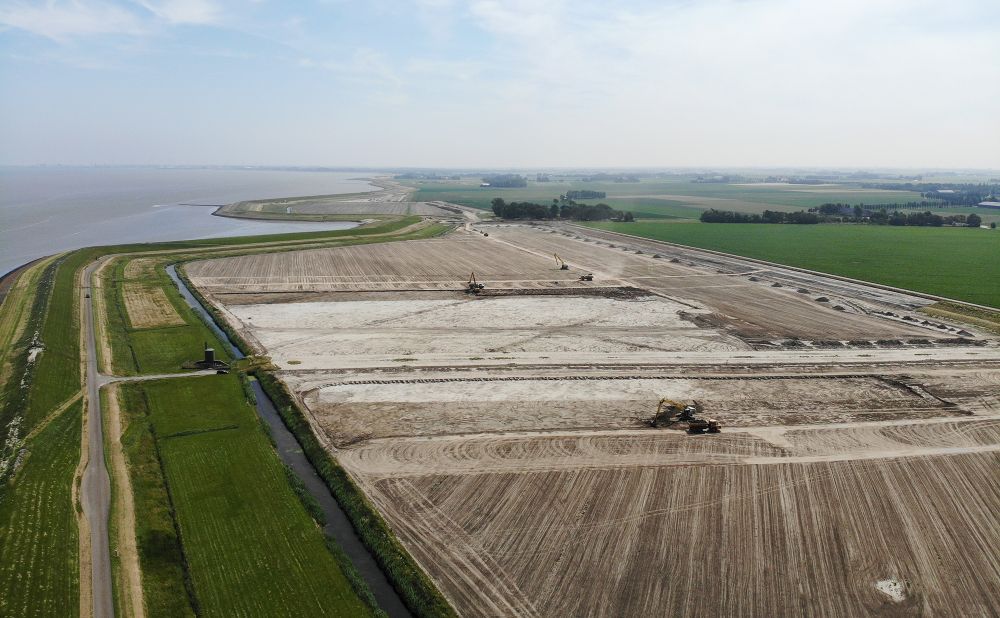
Double dike along the Eems
The coastal defence system along the Eems River at Delfzijl is to have a double dike. The parties involved presented the final design this week. The dike on the sea side will not be as high as the secondary dike, which will protect against any overflow water. The area between the two will be a pilot zone for saline activities.
This is a trial project, all those involved are quick to emphasise. They are the Noorderzijlvest water board, the province of Groningen and the Rijkswaterstaat HWBP flood protection programme. After all, a standard solution could have been applied to reinforce this dike that no longer met the safety requirements: raising and widening would have sufficed. That has indeed been the procedure elsewhere in the coastal defences.
However, with a view to dike innovation, the double dike was chosen for a 2.5 km stretch. This serves a number of purposes: it shows a new approach to dike reinforcement, and creates a zone suitable for experimentation with saline cultivation and sedimentation collection. This week, the Noorderzijlvest water board presented the final design for the double dike.
Double is not automatically stronger
A double dike may well sound twice as strong as a single version, therefore only requiring each individual dike to be half as strong. Unfortunately, that's not how it works: if the primary dike on the sea side were to be breached, the secondary dike would receive the full force of the water and would therefore need to be strong enough to control it.

A special feature of the double construction is that the primary dike will not be raised. 'We're willing to have the water wash over the dike much more often during stormy weather,' says Marco Veendorp of the dike innovation programme. The second dike, further inland, will hold back the overflow water. 'It therefore plays a relatively modest role.'
This means that the primary dike must be strong enough and must not be breached due to overflow water flushing away the inner embankment. 'Further inland, the dike will have a broader verge, and the inner embankment will be reinforced using clay. That will make it strong enough.' The secondary dike need not comply with such strict requirements.
Saline potatoes
The plans for the intermediate zone have yet to be worked out in detail. In the end, private contractors will take responsibility for the experiments. Ideas have already been proffered however, including the saline cultivation of potatoes, comparable to the experiments already underway on the island of Texel. Another involves aquaculture, with fish and shellfish farming.

There will also be an experiment in collection of sedimentation. The water in the Eems-Dollard basin is somewhat murky, which is unfavourable in terms of the biological quality of the water. By letting seawater into the sedimentation collection basin, the sedimentation can gradually separate, after which it may be useful as a construction material. 'The brackish zone formed in this way is also interesting as a new nature area.'
The intention is to have completed broadening the existing sea dike, construction of the secondary dike, design of the intermediate zone and an inlet for the seawater by the end of next year.
Meer artikelen

Een AI-fabriek in Groningen

Gezondheid meten via zweetdruppels
Nieuwste artikelen

Een AI-fabriek in Groningen






